
The relationship between our land and people is crucial, particularly at a time when demographic, social, economic and environmental change is being experienced in rural areas across Scotland; from rural towns and their hinterlands, to coastal areas and islands. SEFARI research focuses on the resilience and wellbeing of Scotland’s rural communities and provides vital support and a wider view for other SEFARI work on environment, land-based industries, food and health. SEFARI research is designed to help people living in and using the rural landscape; it helps identify policies which can enhance community wellbeing and resilience; and it considers the role of empowerment, local participation and democracy.
Sector Contact

Case Studies
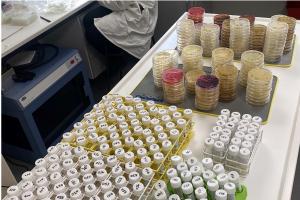
Antimicrobial resistance (AMR) is one of the biggest health-threats of modern time. A global survey in 2019 showed that it claimed more lives than HIV/AIDS or malaria, and AMR is one of the top 10 global public health threats facing humanity. Resistance to current drugs continues to emerge and grow, and there are insufficient new interventions on the horizon. This has left us in a precarious position, for which the World Health Organisation has developed a global strategy to help address the problem.
In this blog we explain how we have mapped out the research activities in Scotland related to AMR, providing a useful and needed overview of the type of ongoing AMR work and who is involved, and how, through SEFARI Gateway funding, we can develop this into an online resource.

Agriculture and food production contribute a large portion of the greenhouse gas (GHG) emissions, account for approximately 20% of the world's total emissions. In Scotland, the picture is no different, where they contribute around a quarter of the total GHG emissions. Hence, it is important to address the transitions needed in these sectors in order to tackle climate change.
In this blog, Iasmim discusses a number of measures that have been recently proposed, or implemented, to help agriculture and food production to be more sustainable. A transition of practices needs to be just for everyone, and Iasmim considers both the opportunities and challenges ahead for this sector.

Water is a vital and essential part of our lives, but the impact of climate change is leading to there being too much water in some places and too little in others. This presents challenges that will require sustainable solutions, tailored to not only the issue but also the locality. Consequently, it is important we understand the many and varied benefits of water as a resource, and how we can tackle the issues we face now, and in the future.
Ahead of World Water Day, and as part of other planned activities, we are delighted to announce the publication of a series of educational posters, designed to promote discussion, on four important water topics: ‘The Hydrological Cycle’, ‘Water and Farming in Scotland’, ‘Water and Climate Change in Scotland’ and ‘Water and Global Climate Change’.
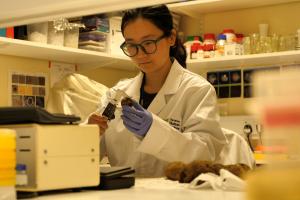
Here at SEFARI, we take pride in our partner institutes and their outstanding achievements in research and informing policy. We firmly believe that inequality in the sustainability sector must be addressed and are committed to using our platforms to showcase and commend remarkable women at all stages of their careers. Read on to celebrate the accomplishments of some of the outstanding SEFARI women.
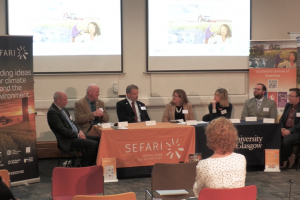
The climate emergency affects every part of our lives and collaboration within and across sectors is therefore key to addressing this crisis. With collaboration at their core, Scotland’s five Centres of Expertise (CoE) work together to connect research with, and respond to, policy needs across issues which affect the climate, water, animal and plant health, land and communities.
In this blog, you can learn more about the work of the CoEs - namely Centre of Expertise for Waters (CREW), ClimateXChange (CXC), Epidemiology, Population health and Infectious disease Control (EPIC), Plant Health Centre (PHC) and SEFARI Gateway - and how during COP26 they came together to host a series of events at the University of Glasgow to showcase how they are helping to protect people and the environment from the effects of climate change.
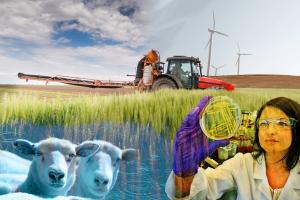
Even though COP26 is now over, there is still a strong focus on initiatives being taken by countries to address climate change. Scotland is committed to reaching net zero by 2045 and to delivering leadership and collaboration within the global response to tackling climate change.
In this blog, Lorna highlights her work in the creation of new resources which outline what is going on across the Centres of Expertise (CoE) to inform and support policy for climate action. Collation of this material from across the Centres was funded by SEFARI Gateway.
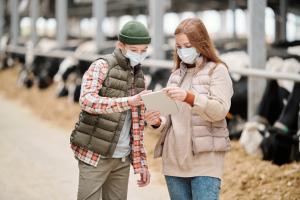
In this blog, we investigate how farmers interact on the online platform Twitter, with the aim of helping scientists to better facilitate mutual learning and support good farm practice.
Online spaces offer the advantage of promoting open discussions with a large amount of people in real time. However, as almost anyone can use and participate in these discussions that can sometimes create issues around the credibility, accuracy and useability of the information shared. Our aim is to better understand how to help individual farmers to find and share accurate and practical information from trusted sources.
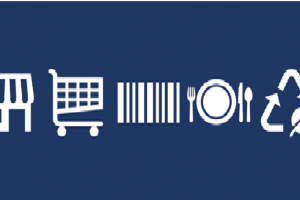
An emergent model of food redistribution, social supermarkets (SSMs), hold considerable potential for facilitating social development in deprived areas while diverting food waste. SSMs take high quality surplus food, not sellable in the mainstream market, and provide it to low-income consumers for greatly discounted prices in a more dignified shopping experience.
In this blog, Aiden Berri and Luiza Toma discuss how their research has found consumers’ intentions to use a SSM are influenced by a variety of factors which combine their food insecurity and food waste attitudes.

From waterfalls to lochs, hydroelectric power to fisheries, Scotland is a country shaped by, and built on, its precious water resources. In this exciting campaign we invite researchers, industry, NGOs and the public from across Scotland to share your experiences, knowledge and expertise of our water resources. If you enjoy the water environment for leisure, relaxation, study, or work and want to share your knowledge and experience please read on.

The farming community are under pressure to not only produce more food and remain profitable but also for their practices to be more sustainable. Despite these pressures, the farming community is experimenting, adapting and sharing their findings. In this blog, Dr Lorna Cole, SRUC, discusses a series of online Think Tanks capturing the wide variety of practices that farmers are trialling, and to share ideas on how wider outcomes could be monitored, in a SEFARI Gateway Responsive Specialist Advisory Group project.
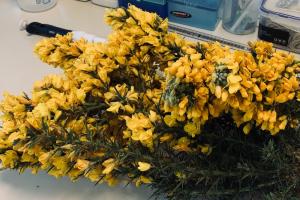
Agriculture bears the brunt of having to reliably supply food, ensure its own economic viability, while complying with environmental concerns. Farming comes under a lot of pressure to deliver produce, despite unfavourable climatic variation, changes in pest behaviour and the control of invasive plants.
In this blog, Ajay Iyer and Wendy Russell consider a different approach and discuss how invasive or “undesirable” plants such as Gorse (Ulex europaeus) could serve as an alternate and sustainable source of protein.
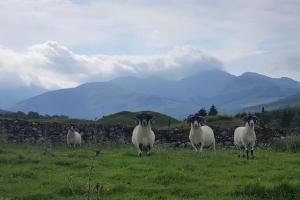
With the pandemic turning our lives upside down, the use of digital communication has accelerated overnight. Webinars, Teams meetings, Digital classrooms, Virtual brainstorming boards, to name but a few. They have all helped in keeping us connected from the safety of our own homes. However, these virtual technologies achieve so much more than simply enabling conversations to continue. They have removed barriers - social, physical, economic, geographical - and in removing these barriers they have made research more accessible.
In this blog, Dr Lorna Cole, discusses the recent creation of a series of virtual tours at five of our leading SEFARI research farms, in a SEFARI Gateway Responsive Opportunity funded project. The tours are readily accessible through the Google Earth platform, giving everyone access to the countryside and allowing us to learn more about the research that is being conducted on SEFARI’s research farms.
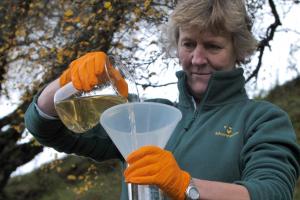
The protozoan parasite Cryptosporidium is a significant cause of diarrhoeal disease in humans and animals in UK and many other countries across the world. Cryptosporidium are highly successful parasites as they can infect many different hosts, multiplying in the gut and then shedding millions of parasite oocysts (eggs) in the faeces, where they can contaminate the environment and are a source of infection for other hosts.
SEFARI research is increasing our understanding of the sources of Cryptosporidium parasites, and the transfer of oocysts from host faecal material through the environment to water courses. This work will help with developing strategies to protect water catchments.

Since March 2020, attempts to control the spread of COVID-19 have led to substantial and far-reaching changes to everyday life, with social restrictions of varying severity imposed, relaxed, and reimposed over the intervening 12 months. With habitual dietary intake largely dependent on environmental cues, significant changes in our typical lifestyles and everyday surroundings might be expected to have consequences for our diets and food habits.
In an earlier blog, we explained how we would leverage an existing (ongoing) study on dietary habits to examine how our food habits have changed over the course of the pandemic. In this blog, we present some of our initial data and outline what we have discovered so far.

The past year has been, and 2021 will undoubtedly remain, challenging for us all. At Gateway we are focussing our efforts on continuing to support the COVID-19 recovery response while maintaining momentum for knowledge exchange partnership working across environment, land, agriculture, food and rural community priorities.
In particular, we are building upon opportunities to accelerate action towards a green recovery, climate and biodiversity action and just transition for net zero emissions. Gateway is supporting these and other key agendas such as health and wellbeing, by providing extensive access to Scottish Government strategic research and expertise through our funded projects which we are also increasingly interlinking projects to maximise the value of evidence and to further enhance stakeholder linkages.
This update follows on from our previous update in June 2020 and outlines our more recent funded projects and activity.

Currently, we are all experiencing unique working conditions, leading us to adapt to new ways of engaging and learning.
In this blog Dr Claire Hardy, who was awarded SEFARI Gateway Responsive Opportunity Funds, explores the use of virtual technology to engage farmers and the agricultural community, helping farmers to experience in-field events safely, flexibly, and remotely.
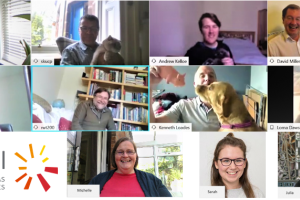
In this blog, we thought we’d let you know the latest developments from SEFARI Gateway, as we continue to work together even though we are currently physically apart.
For us, lockdown has really emphasized our love of nature (on daily walks, in the garden or by virtually meeting each other’s pets, now so much a part of the virtual meeting world!). Gateway’s work itself has been intensive. The strengths of our stakeholder partnerships and an adaptable approach to connecting across knowledge networks has hugely benefitted us and provided new ways to work.
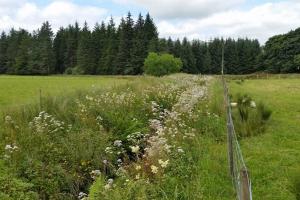
Ahead of this week's Land Use Conference, which has been part-funded by the SEFARI Gateway Responsive Opportunity Fund, we are delighted Professor Davy McCracken can share his recently published thoughts on rewarding the delivery of public goods. The conference takes place on 28-29th November 2018 at Dynamic Earth, Holyrood Road, Edinburgh.
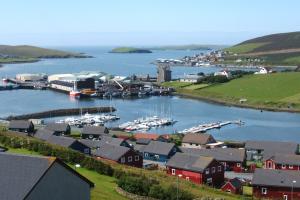
This is the second of two blog posts about place-based rural policy. In this blog post on this topic, we are pleased that Jonathan Hopkins, James Hutton Institute is able to explain more about the evidence needs to support place-based rural policies. The previous post can be accessed here and explains what exactly is place based rural policy.
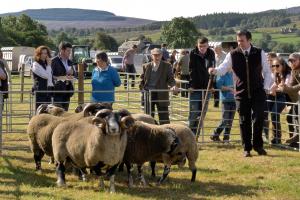
The Scottish Rural Parliament will meet in Stranraer, Dumfries and Galloway (14th - 16th November). Across the range of talks and exhibits, the theme is “Taking Action.” In the lead-up to this meeting, we are publishing two blog posts about place-based rural policy. The first of these is written by Andrew Copus, James Hutton Institute and Jane Atterton, the Rural Policy Centre, SRUC, who start off by explaining what exactly is place based rural policy.
Pagination
Blog
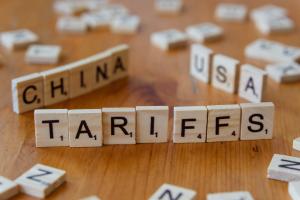
The return of retaliatory tariffs
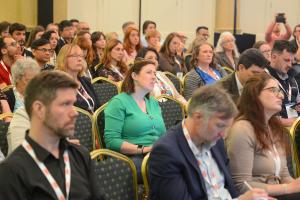
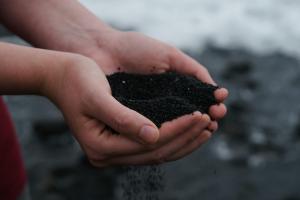
On April 14th, 1935, the largest dust storm in American history occurred. A black cloud carrying 300,000 tons of topsoil from the Great Plains deposited dust as far away as New York.
